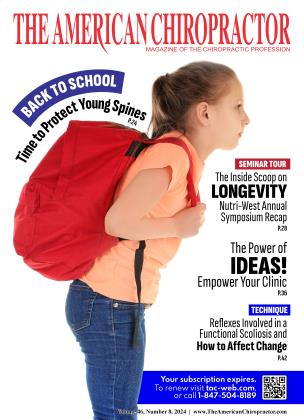Mechanical Motion Therapy for Elderly Patients
August 1 2024 Moe PisciottanoMechanical Motion Therapy for Elderly Patients
August 1 2024 Moe PisciottanoEmphasizing Comfort and Mobility: Mechanical Motion Therapy for Elderly Patients
By Moe Pisciottano, DC
As individuals age, musculoskeletal discomfort becomes increasingly prevalent, impacting their quality of life. To address this challenge, mechanical motion therapy (MMT) coupled with multi-impulse mechanical stimulation (MIMS) emerges as a transformative approach to alleviate pain and enhance comfort among elderly patients.
The aging population faces a substantial burden of musculoskeletal disorders, with millions of individuals grappling with these conditions. Conventional treatments often prioritize symptomatic relief through medication or surgical interventions, overlooking the fundamental goal of restoring healthy musculoskeletal function. However, the integration of MMT and MIMS offers a holistic solution by targeting the root causes of discomfort and dysfunction.
MMT recognizes the intricate interplay between hard and soft tissues, aiming to reeducate dysfunctional neuromuscular relationships and restore optimal function. By incorporating techniques such as active release, positional release, myofascial release, and proprioceptive neuromuscular facilitation, MMT addresses the complexities of musculoskeletal disorders, promoting improved mobility and comfort.
MIMS devices further revolutionize musculoskeletal care by delivering precise stimuli aligned with the natural frequencies of treated tissues. These devices stimulate mechanoreceptors, enhancing proprioceptive responsiveness and promoting tissue compliance. Studies demonstrate the impressive efficacy of MIMS in reducing pain, inflammation, and fibrosis while improving tissue oxygenation and proprioception.
The combined benefits of MMT and MIMS are particularly promising for elderly patients seeking to live more comfortably. By reducing pain, enhancing mobility, and improving overall musculoskeletal function, this innovative approach enables elderly individuals to maintain independence and enjoy a higher quality of life.
Moreover, the evidence-based nature of MMT and MIMS offers a compelling alternative to conventional treatments, promising shorter treatment times, enhanced patient satisfaction, and cost-effectiveness. As musculoskeletal disorders continue to impose a significant economic burden, the adoption of MMT and MIMS represents a paradigm shift in geriatric care, emphasizing proactive management and holistic rehabilitation.
In conclusion, mechanical motion therapy holds immense potential in enhancing the comfort and mobility of elderly patients. By addressing the underlying causes of musculoskeletal discomfort and promoting optimal function, MMT and MIMS empower elderly individuals to age gracefully and maintain active, fulfilling lives.
References
1. United States Bone and Joint Initiative. The Burden of Musculoskeletal Diseases in the United States (BMUS), Third Edition [Internet]. Rosemont, IL: United States Bone and Joint Initiative; 2014 [cited 2024 May]. Available from: http://www.boneandjointburden.org.
2. CDC National Health Center Statistics. National Health Interview Survey (NHIS) Adult sample [Internet]. Atlanta, GA: U.S. Centers for Disease Control and Prevention; 2012 [cited 2024 May]. Available from: www.cdc.gov/nchs/nhis/nhis_2012_data_release.htm.
 View Full Issue
View Full Issue






